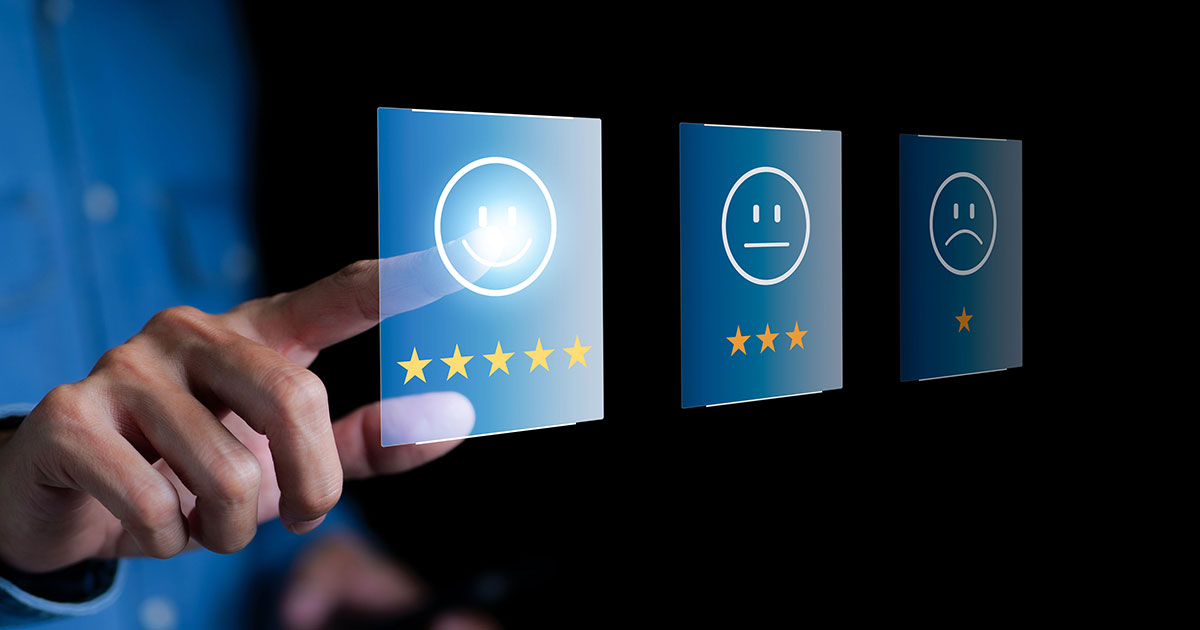
Gen Z Employee Performance Evaluation: 2025 Next-Gen HR Guide
How to evaluate Gen Z employees? Next-generation employee evaluation strategies and implementation guide with continuous feedback, peer recognition, OKR, and digital performance management.

In 2025, Gen Z (born 1997-2012), making up 27% of the workforce, is creating a fundamental paradigm shift in the workplace. According to Deloitte's 2024 Global Gen Z and Millennial Survey, 74% of Gen Z employees find traditional annual performance reviews inadequate.
This generation, born as digital natives, accustomed to instant feedback, and expecting transparency, presents a distinct profile. So how should HR departments adapt to this new reality? Here's a comprehensive guide.
Welcome to the Gen Z Workforce: Numbers and Facts
To understand Gen Z, let's first look at who they are. According to Pew Research Center, Gen Z consists of individuals born between 1997-2012, aged 13-28 as of 2025.
27% Workforce
Gen Z represents 27% of the global workforce in 2025 (McKinsey, 2024)
32% Turnover Rate
Highest annual employee turnover rate (LinkedIn, 2024)
83% Mental Health
Want mental health metrics included in performance evaluation (APA, 2024)
58% Transparency
Consider leaving due to non-transparent processes (McKinsey, 2024)
"Gen Z doesn't just want to earn a paycheck at work. Instant development, transparent communication, and purpose-driven work are their core expectations. Performance management must adapt to this reality." - Harvard Business Review, 2024
Gen Z's 5 Core Expectations in the Workplace
According to Gallup's "State of the Global Workplace 2024" report, Gen Z employees have clear expectations at work. These expectations directly impact performance evaluation systems:
1. Instant and Continuous Feedback
They expect weekly or monthly continuous feedback instead of annual reviews. 68% want feedback at least once a week (Officevibe, 2024). Delayed feedback decreases motivation and slows development.
2. Transparent Goal Setting and Progress Tracking
They prefer transparent goal systems like OKR (Objectives and Key Results). 72% want to see how corporate goals connect to their work (Betterworks, 2024). Black-box evaluation processes lose trust.
3. Technology-Integrated Systems
Digital natives find paper forms or Excel-based systems archaic. 81% expect mobile access and real-time dashboards in performance management (PwC, 2024). They avoid systems with poor user experience (UX).
4. Mental Health and Work-Life Balance Metrics
According to American Psychological Association 2024 research, 83% of Gen Z want burnout, work-life balance, and mental health metrics considered in performance evaluation. Output measurement alone is seen as insufficient.
5. Peer Recognition and Appreciation Culture
They want appreciation not just from managers but also from peers. According to Gallup, Gen Z employees who receive regular peer recognition have 43% higher engagement. Horizontal rather than hierarchical recognition culture is preferred.
Traditional vs Gen Z-Compatible Performance Management
Key differences between traditional performance evaluation systems and modern systems expected by Gen Z:
Traditional: Annual Review
One big evaluation every 12 months, delayed feedback, creates shock effect
Modern: Continuous Feedback
Weekly/monthly feedback, instant correction, continuous development
Traditional: One-Way
Feedback only from manager, hierarchical structure
Modern: 360 Degree + Peer
Multi-directional perspective, peer recognition, horizontal communication
Traditional: Closed Process
Decisions made behind the scenes, employee kept out of process
Modern: Transparent OKR
Goals and progress visible to everyone, transparency
Traditional: Excel/Paper
Manual forms, lost data, delayed reporting
Modern: Digital Platform
Mobile access, real-time analytics, automated reports
7 Modern Performance Measurement Strategies for Gen Z
Seven actionable strategies to effectively evaluate and retain Gen Z employees:
Build a Continuous Feedback Culture
Start weekly 15-minute check-in meetings instead of annual reviews. Adobe's transition to this model resulted in a 30% reduction in employee turnover. Establish instant feedback sharing on digital platforms, pulse surveys to monitor employee sentiment, and continuous feedback systems.
Establish Peer Recognition Systems
Enable employees to appreciate each other. Add instant thanks, achievement sharing, and gamification elements (points, badges) through platforms like Bonusly and Kudos or TestEd's integrated peer feedback module. According to TalentLMS, peer recognition increases participation by 65%.
Transparent Goal Setting with OKR
Adopt the OKR methodology used by Google, Intel, and LinkedIn. Corporate goals, department OKRs, and individual key results should be transparently shared. According to Betterworks 2024 report, Gen Z engagement is 51% higher in companies using OKR. Quarterly updates and transparency are critical for Gen Z.
Instant Development Opportunities with Micro-Learning
Instantly integrate learning opportunities with performance feedback. When a weak competency is identified, suggest 5-10 minute micro-learning content. Track development with corporate training measurement. According to LinkedIn Learning data, Gen Z prefers micro-learning at a rate of 94%.
Add Gamification Elements (Carefully)
Add leaderboards, badge systems, progress bars, and team challenges. But be careful: don't reduce it to just a scoring system, support with genuine development and recognition. According to TalentLMS, 78% of Gen Z find gamification motivating, but shallow implementations have the opposite effect.
Include Mental Health Metrics
Make burnout symptoms, work-life balance, and employee satisfaction surveys part of performance evaluation. According to American Psychological Association, 83% of Gen Z expect this. Not just output, but wellbeing should also be measured. Monitor regularly with pulse surveys.
Real-Time Analytics and Self-Service Dashboard
Employees should have 24/7 access to their performance data. Real-time dashboards, progress charts, competency maps should be offered as self-service. Provide data transparency with employee development analytics. According to PwC, 81% of Gen Z expect mobile access.
Gen Z-Compatible Performance Evaluation with TestEd
TestEd platform offers a comprehensive performance management ecosystem that meets all Gen Z expectations:
TestEd Gen Z Performance Ecosystem
1. Mixed Test System: Multi-Dimensional Evaluation
Combine Likert scale (1-5), multiple choice, and open-ended questions in a single test. Collect both quantitative and qualitative data. Use the mixed test guide for flexible evaluation. Ideal for the detailed feedback Gen Z expects.
2. 360 Degree + Peer Recognition Integration
Automatically collect manager, peer, subordinate, and self-assessment. Instant thanks and recognition system with peer recognition module. Provide multi-directional perspective with 360-degree system.
3. AI-Powered Open-Ended Analysis
Automatically process hundreds of open-ended responses. Word frequency analysis, sentiment detection, word cloud visualization. Understand Gen Z's qualitative feedback with open-ended analysis.
4. Mobile Access and Real-Time Dashboard
Full access from mobile devices with responsive design. Real-time performance dashboard, progress charts, competency map. Employees can access their data 24/7 with self-service portal.
5. Periodic Measurement and Trend Analysis
Weekly pulse surveys, monthly check-ins, quarterly comprehensive evaluations. Before-after comparisons, development trends, department-based benchmarks. Infrastructure ready for continuous feedback loop.
6. Security and Anonymity
Risk score security system, GDPR-compliant data management, anonymous feedback protection. Balance Gen Z's transparency expectations with security.
30-Day Transition Plan: How to Switch to Gen Z-Compatible System?
Gradual transition plan from traditional performance evaluation to Gen Z-compatible system:
Week 1: Current State Assessment
Survey your Gen Z employees: Are you satisfied with the current performance system? What should change? Collect expectations with pulse survey. Hold workshop with HR team, evaluate the 7 strategies in this guide.
Week 2: Continuous Feedback Pilot
Start weekly check-in system in a single department (e.g., 10-15 people). Teach managers 15-minute 1-on-1 coaching. Activate continuous feedback module on TestEd platform. Collect first week feedback.
Week 3: Peer Recognition Launch
Open peer recognition platform to entire company. Hold kickoff meeting, share usage guide. Target at least 50 peer thanks in the first week. Increase participation with gamification elements (leaderboard, top 10 recognition).
Week 4: First Feedback Cycle and Retrospective
Complete first monthly feedback cycle for all employees. Even if managers give feedback, have employees do self-assessment. Retrospective meeting: What worked? What should be improved? Optimize for second month. Conduct department-based analysis.
5 Most Common Mistakes in Gen Z Performance Management
Critical mistakes to avoid when building performance system for Gen Z:
1. Labeling Gen Z Only as Digital
Yes, they love technology, but shallow digitalization doesn't work. A platform with poor user experience is worse than none. Invest in UX, test it.
2. Micro-Management Trap
Continuous feedback doesn't mean checking every second. Weekly check-in is enough. Constant monitoring creates distrust and Gen Z notices immediately. Preserve autonomy.
3. Creating Expectations Without Feedback
Setting goals and then staying silent demotivates Gen Z. Progress feedback at regular intervals is essential. Silence creates negative perception.
4. Ignoring Mental Health
Output measurement alone is not enough. Systems that don't monitor burnout symptoms lead to high turnover. Add wellbeing metrics.
5. Implementing Gamification Superficially
Just giving points and badges is not enough. Without genuine recognition, development, and appreciation culture, gamification appears manipulative. Gen Z understands and doesn't value this.
Success Story: How Tech Startup Reduced Gen Z Turnover?
Story of a 120-person tech startup's transition to Gen Z-compatible performance management:
Case: SaaS Company (120 employees, 65% Gen Z)
Situation: 42% annual turnover rate, 38% employee satisfaction, annual performance review
Action: Continuous feedback + peer recognition + OKR + mental health pulse survey + gamification with TestEd
Implementation: 30-day transition plan, weekly check-ins, monthly peer recognition leaderboard, quarterly OKR review
Results (12 months): Turnover dropped to 18% (57% reduction), employee satisfaction rose to 76%, 84% of Gen Z employees prefer new system. LinkedIn Glassdoor score increased from 3.2 to 4.5.
This case shows that performance management aligned with Gen Z expectations improves not only employee satisfaction but also business results.
2025 and Beyond: Gen Z Performance Management Trends
Innovations awaiting us in Gen Z-focused performance management in the near future:
Future Trends
- AI-Powered Feedback Suggestion: AI will suggest to managers which employee to give feedback to, when, and how
- VR/AR Performance Simulations: Performance evaluation through work scenarios in virtual reality
- Blockchain-Based Skill Credentials: Verifiable certification of competencies and achievements on blockchain
- Mental Health AI Assistants: AI-powered burnout early warning systems and wellbeing coaches
- Hyper-Personalized Development Plans: AI-generated development roadmaps customized for each employee
- DAO-like Peer Governance: Direct employee participation and voting in performance processes
Conclusion: Performance management for Gen Z is not just an HR process, but a strategic cultural transformation at the center of employee experience. With continuous feedback, transparency, digital tools, and mental health focus, you can retain, develop, and build your organization's future with Gen Z.
Frequently Asked Questions
What do Gen Z employees expect from performance evaluation?
According to Deloitte's 2024 Global Gen Z and Millennial Survey, 74% of Gen Z employees find traditional annual performance reviews inadequate. This generation expects weekly or monthly continuous feedback, transparent goal setting (OKR), peer recognition systems, and instant development opportunities. Additionally, 83% want mental health metrics to be considered in performance evaluation.
What is the difference in work expectations between Gen Z and Millennials?
While Millennials prioritize career advancement and flexible working, Gen Z focuses more on transparency, instant feedback, and mental health. According to McKinsey research, 58% of Gen Z consider leaving their job due to non-transparent performance processes. Also, as digital natives, Gen Z expects digital tools and real-time analytics in performance management.
How is continuous feedback implemented?
Continuous feedback is a regular feedback system on a weekly or monthly basis instead of annual reviews. Implementation steps: 1) Weekly 15-minute check-in meetings, 2) Instant feedback sharing on digital platforms, 3) Taking the employee pulse with pulse surveys, 4) Peer-to-peer recognition system, 5) Progress tracking with real-time dashboards. Adobe's transition to this model resulted in a 30% reduction in employee turnover.
What is peer recognition system and how does it work?
Peer recognition is a system that enables employees to appreciate each other. Through digital platforms, employees can instantly thank colleagues and share achievements. When enriched with gamification elements (points, badges, leaderboards), participation increases by 65%. According to Gallup data, employees who receive regular peer recognition have 43% higher engagement.
Does gamification work in performance evaluation for Gen Z?
Yes, but it must be applied carefully. According to TalentLMS 2024 research, 78% of Gen Z employees find gamification elements motivating. Effective gamification: Leaderboards (transparent ranking), badge systems (achievement symbols), progress bars (development visualization), team challenges. However, it should not be reduced to just a scoring system and must be supported by genuine development and recognition.
What should be done in performance management to retain Gen Z employees?
According to LinkedIn Workforce Report 2024, Gen Z has the highest turnover rate in the workforce (32% annually). Retention strategies: 1) Transparent career path and development plan, 2) Weekly continuous feedback, 3) Including mental health metrics in evaluation, 4) Recognition culture with peer recognition, 5) Self-service access through digital platforms, 6) Purpose-driven goals (purpose-driven OKR). Modern platforms like TestEd offer these features under one roof.






Modern Performance Management for Gen Z
Want to evaluate your next-generation employees with continuous feedback and digital tools? Discover TestEd's Gen Z-compatible platform.
Explore Platform